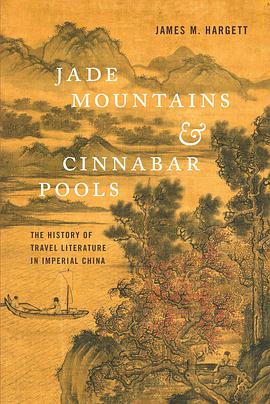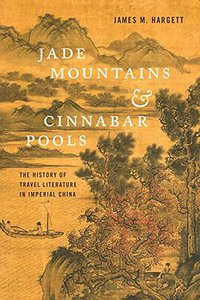Jade Mountains and Cinnabar Pools
豆瓣
The History of Travel Literature in Imperial China
James M. Hargett
简介
First-hand accounts of travel provide windows into places unknown to the reader, or new ways of seeing familiar places. In Jade Mountains and Cinnabar Pools, the first book-length treatment in English of Chinese travel literature (youji), James M. Hargett identifies and examines core works in the genre, from the Six Dynasties period (220–581), when its essential characteristics emerged, to its florescence in the late Ming dynasty (1368–1644). He traces the dynamic process through which the genre, most of which was written by scholars and officials, developed, and shows that key features include a journey toward an identifiable place; essay or diary format; description of places, phenomena, and conditions, accompanied by authorial observations, comments, and even personal feelings; inclusion of sensory details; and narration of movement through space and time.
Travel literature’s inclusion of a variety of writing styles and purposes has made it hard to delineate. Hargett finds, however, that classic pieces of Chinese travel literature reveal much about the author, his values, and his view of the world, which in turn tells us about the author’s society, making travel literature a rich source of historical information.
contents
Preface
Special Matters and Technical Terms
Chronology of Chinese Dynastic and Historical Periods
Introduction
Chapter 1: Harbingers in the Six dynasties
Chapter 2: Articulation in the Tang
Chapter 3: Maturity in the Song
Chapter 4: Transition and Innovation in the Jin, Yuan, and Early to Mid-Ming
Chapter 5: The Golden Age of Travel writing in the Late Ming
Postface
Notes
Bibliography
Glossary/Index

